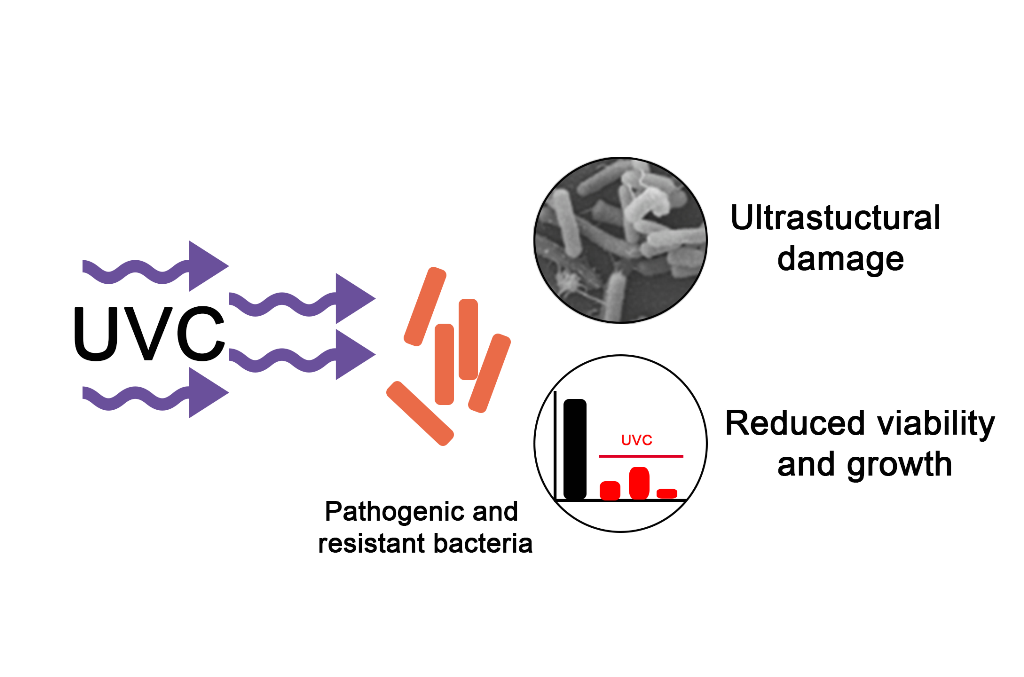Healthcare-associated infections (HAI) worldwide includes infections by ESKAPE-E pathogens. Environmental surfaces and fomites are important components in HAI transmission dynamics, and shoe soles are vectors of HAI. Ultraviolet (UV) disinfection is an effective method to inactivate pathogenic microorganisms. In this study, we investigated whether the SANITECH UVC shoe sole decontaminator equipment that provides germicidal UVC radiation could effectively reduce this risk of different pathogens. Six standard strains and four clinical MDR strains in liquid and solid medium were exposed to a UVC System at specific concentrations at other times. Bacterial inac-tivation (growth and cultivability) was investigated using colony counts and resazurin as meta-bolic indicators. SEM was performed to assess the membrane damage. Statistically significant reduction in cell viability for all ATCCs strains occurred after 10 sec of exposure to the UVC sys-tem, except for S enterica, which only occurred at 20 sec. The cell viability of P. aeruginosa (90.9%), E. faecalis and A. baumannii (85.3%), S. enterica (82.9%), E. coli (79.2%) and S. aureus (71.9%) was re-duced considerably at 20 sec. In colony count, after 12 sec of UVC exposure, all ATCC strains showed a 100% reduction in CFU counts, except for A. baumannii, which reduced 97.7%. A sub-stantial reduction of colonies above 3 log10 was observed at 12 and 20 sec in all bacterial strains tested, except for A. baumannii ATCC 19606 (12 sec). The exposure of ATCCs bacterial strains to the UVC system for only 2 sec was able to reduce 100% in the CFU count in all ATCCs strains, S. au-reus, P. aeruginosa, E. coli, A. baumannii, E. faecalis, except the S. enterica strain which had a statis-tically significant reduction of 99.7%. In ATCC strains, there was a substantial decrease in colonies after 4 sec (sec) of exposure to the UVC system, with a reduction ranging from 3.78-4.15 log10 CFU/mL. This reduction was observed in MDR/ESKAPE-E strains within 10 sec, showing that UVC could eliminate above 3.84 log10 CFU/mL. SEM showed a reduction of pili-like appendages after UVC treatment in all strains except for E. coli (ATCC 25922). The Sanitech UVC shoe sole decontaminator equipment from Astech Co. effectively killed in vitro a series of ATCCs and MDR/ESKAPE-E bacteria of sanitary interest, commonly found in the hospital environment.

